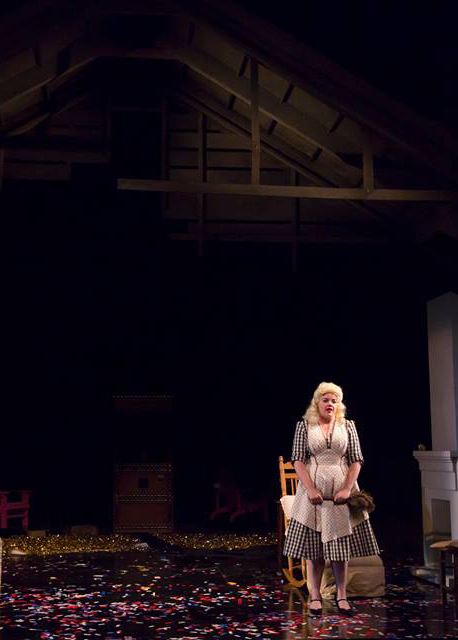World Without End...?
“Indifferent to the smaller credibilities, [The Skin of Our Teeth] takes place in all periods at once. And since Man is brave and long-enduring, isn’t it right that every now and then it should be gay? ”
“History doesn’t repeat itself, but it does rhyme.”
Thornton Wilder wrote The Skin of Our Teeth in 1941, just before the attack on Pearl Harbor. By the time of the play’s New Haven premiere the following year, the U.S. was at war. Already a respected professor and two-time Pulitzer Prize winner, Wilder volunteered to serve as an officer in the Air Force, and was stationed in Europe. While there, his sister Isabel sent him word of the fraught rehearsal process: the production teetered on the edge of disaster, as the volatile egos of star Tallulah Bankhead, playing Sabina, and director Elia Kazan clashed continually. Thus both global crisis and backstage brawls threatened to overwhelm The Skin of Our Teeth, a play so resilient it contains not one but three different end-of-the-world scenarios.
This was extravagant but not exactly new to theatergoers of the period. In the wake of the First World War, artists and intellectuals were possessed by apocalyptic paroxysms. European writers like Russia’s Vladimir Mayakovsky and the Czech Karel Čapek spun tales of the world’s destruction and re-creation. In the U.S., on the other hand, the prevailing mood in theater and film was much merrier in general. The tone of Wilder’s play has a good deal in common with sprawling Depression-era comedies like Kaufman and Hart’s You Can’t Take it With You and Charlie Chaplin’s Modern Times, in which humble heroes stare down disaster and come out grinning. The Antrobus family looks the threat of world annihilation in the face, and to be sure, there is the twinkle of American optimism in their eyes. But is that enough?
The Skin of Our Teeth has not only endured for seven decades, it has continued to thrive, gathering new meanings for new generations. In 2015, we look at the play and see not only Wilder’s 1942, but also a panoramic view of the history from then to us: the space race and presidential sex scandals and the rise of jihad. Our historical moment resembles the one into which The Skin of Our Teeth was born: conflict is all around us, and the future is uncertain. Yet the distance between 2015 and 1942 is vast. If it is indeed true that tragedy is a close-up and comedy a long shot, then we have an excellent vantage point from which to consider this strange, funny play. Let us laugh and consider the end of the world together, again and again. And again.
CLICK HERE to read an interview with The Skin of Our Teeth director, Luke Harlan.









